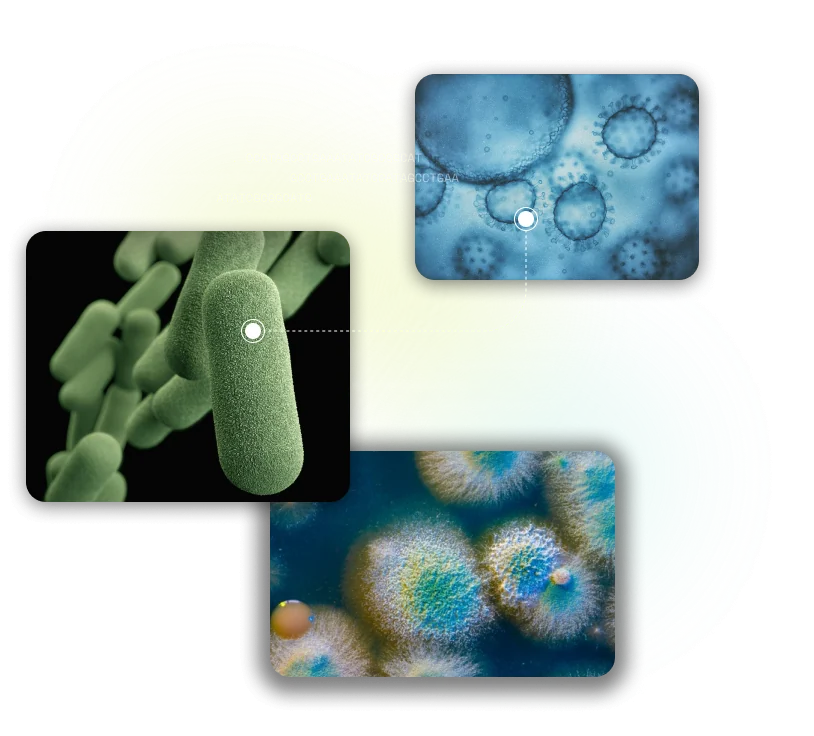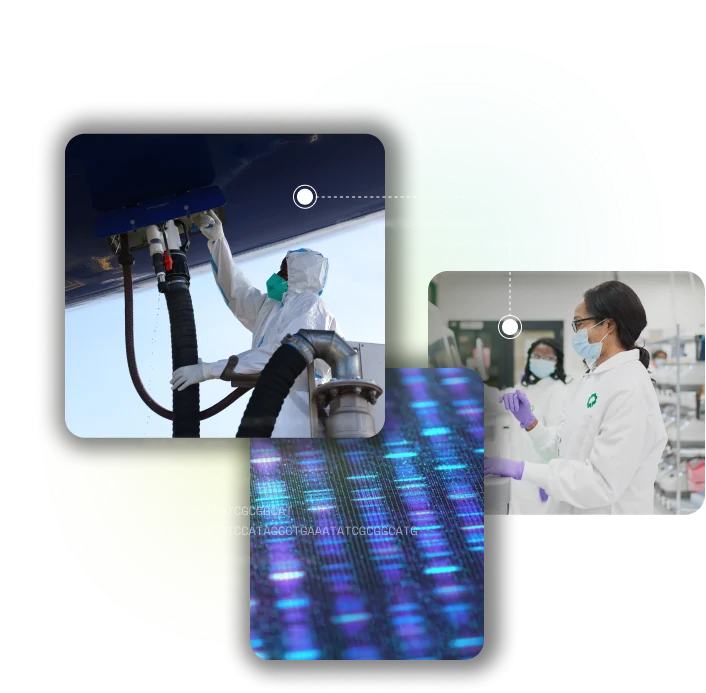THE
EVOLUTION
OF BIOSECURITY
Biological
risks
are
unpredictable.
We
help
the
world
prevent
them.
Explore
our products
Ginkgo Canopy
Radar for biological threats
Ginkgo Canopy detects the presence and migration of biological risks, providing early warning and deep insight. Passive biological surveillance that’s always-on, pervasive, and pathogen-agnostic, to provide actionable intelligence.
LEARN MORE ABOUT CANOPY
Ginkgo Horizon
Intelligence on biological threats at a global scale
Ginkgo Horizon integrates the global network of Canopy biological sensors with our digital epidemiology and early warning tools. The platform identifies outbreaks anywhere in the world, generates deep bioinformatic insights, and provides decision support.
LEARN MORE ABOUT HORIZON

Ever-increasing likelihood and consequences of biological threats
One of the most impactful risks to national security and public health include naturally occurring infectious diseases that can cause pandemics that lead to widespread loss of life and economic disruption. Our research shows that these threats are becoming more prevalent and more consequential through time. Using our current scientific models, the likelihood of another COVID-scale pandemic is roughly 50% in the next 25 years.
Beyond natural threats, the rapid pace of technological change carries its own risks, whether from accidental lab leaks and other inadvertent human action or from malicious actors who may genetically engineer pathogens to cause targeted and mass destruction.
Whether natural, accidental, or intentional, biological risks are becoming more prevalent, and more consequential.
Revolutionary and evolutionary technology to mitigate biological threats
Ginkgo Biosecurity offers two wholly innovative biosecurity products designed to monitor, detect, and analyze biological threats. Canopy is used primarily by national security and public health agencies to gain early and actionable intelligence, as well as decision support, for biological threats that could lead to domestic consequences. Horizon provides an overview of the emergence and migration of biological threats at global scale, including predictive analytics, and is optimized for use by agencies charged with risk analysis.
Both products can produce early detection alerts for specific target pathogens, pervasive genomic surveillance to detect a wide array of biological threats, and targeted decision support. In addition, Ginkgo Biosecurity can apply ENDAR, our computational tool that uses AI to detect genetic engineering in samples we collect.

A proven record of success
13,600,000+
Samples collected
77,000+
Viral samples sequenced to date
13,000+
Pathogen genomes sequenced to date
12
Key international airports (incl. 2 outside US)
14
Countries with active programs, pilots, or MOUs (plus multilateral partnerships with Africa CDC and African Risk Capacity)
108
Countries of origin of flights sampled